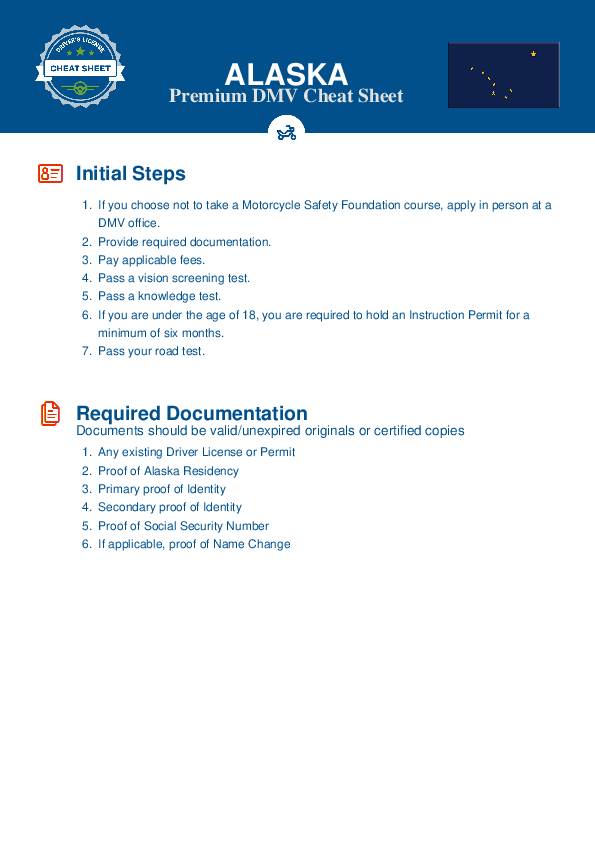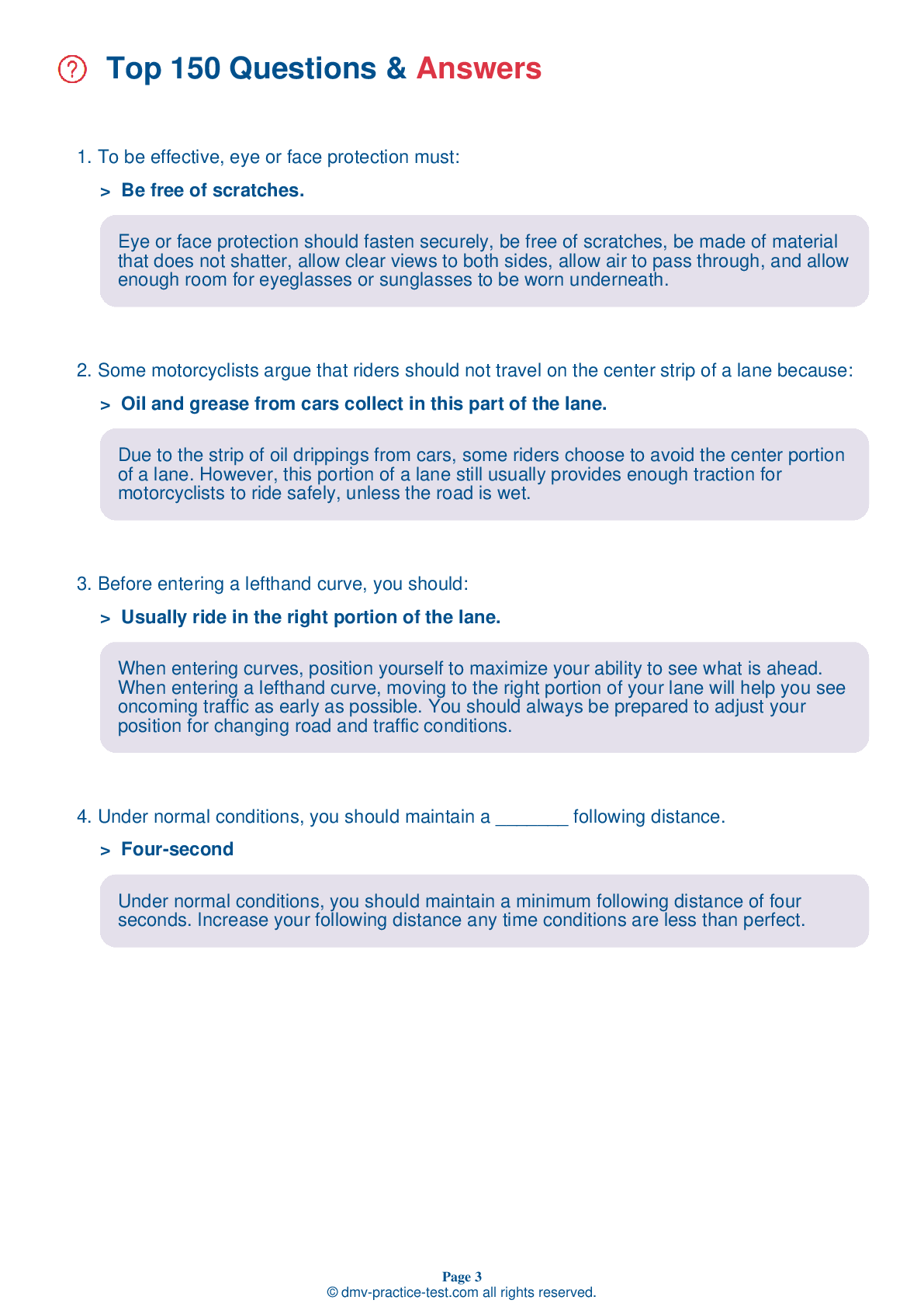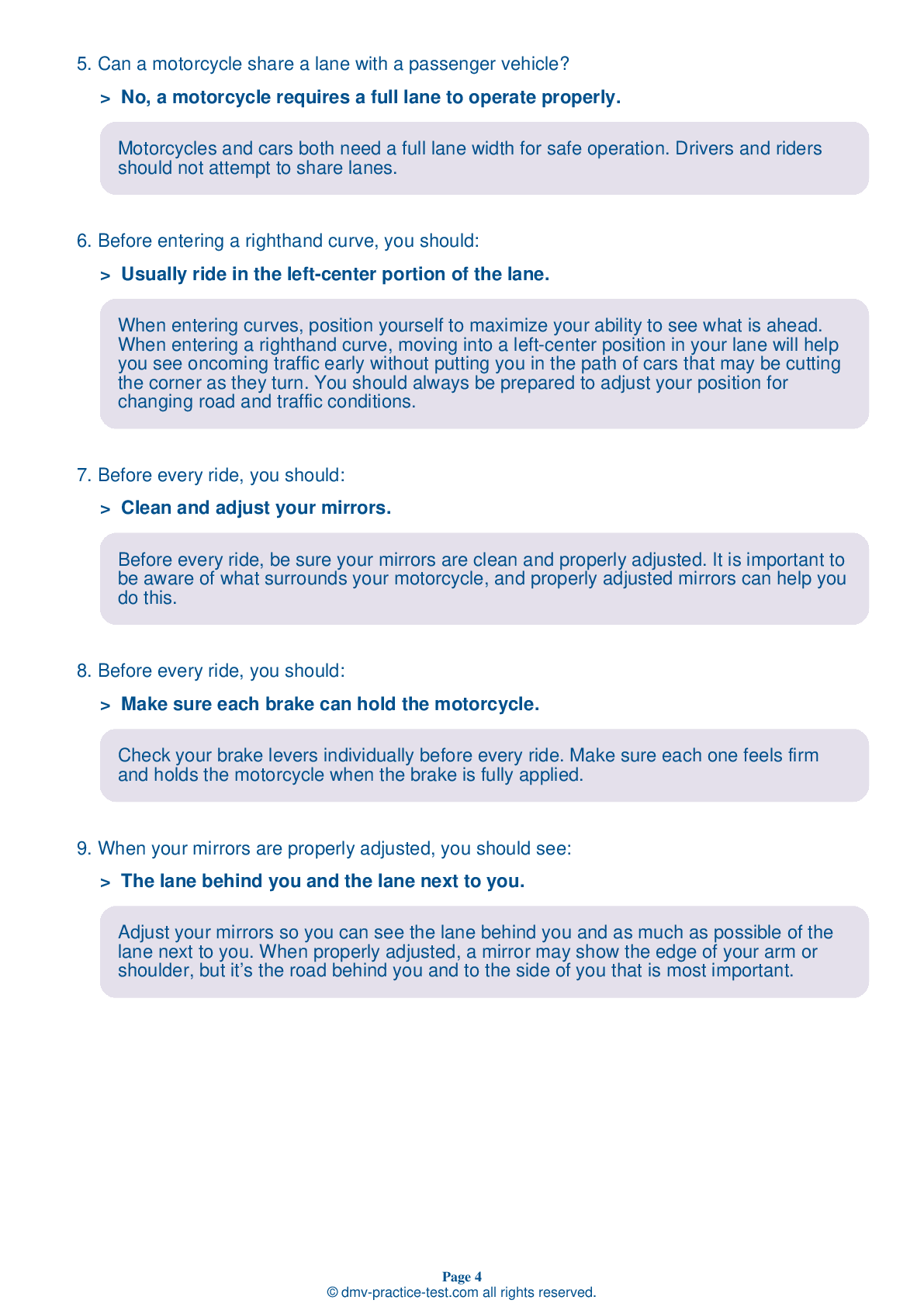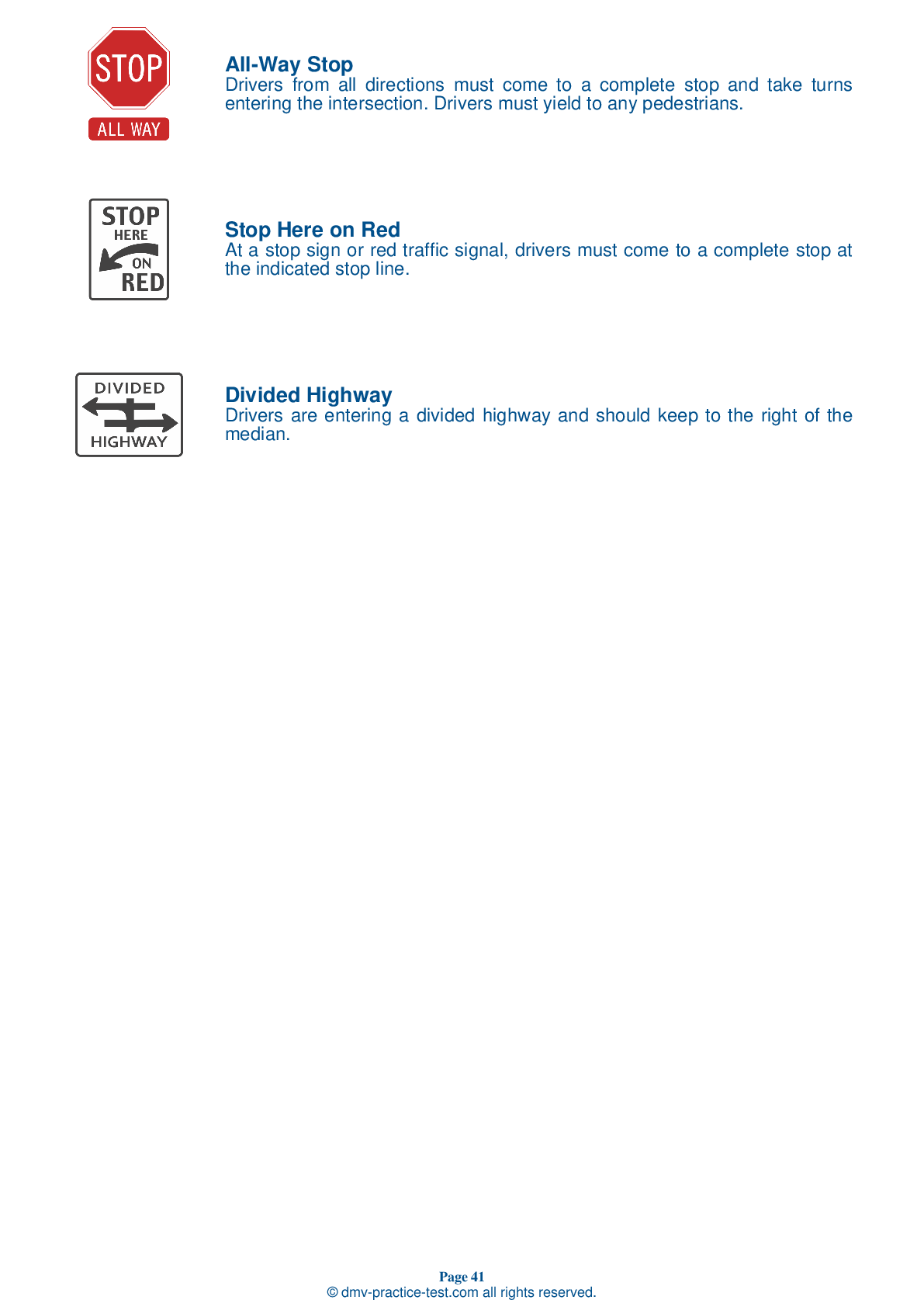Motorcycle Test | License AK 2025 | FREE Online Practice! #1 Page 4 of 4
Take this FREE motorcycle test (license in AK 2025) to check your knowledge of the road rules. To improve your results, download a motorcycle handbook online, study theory, and practice for free on our website. Still worried about how to get a motorcycle license in Alaska in 2025? Check our website for more sample tests, train as much as possible, and boost your grades!
19 . When holding the right handgrip, you should:
Hold the handgrips firmly. Start with your right wrist down to keep from accidentally using too much throttle, especially if you need to reach for the brake suddenly.
20 . Some motorcyclists argue that riders should not travel on the center strip of a lane because:
Due to the strip of oil drippings from cars, some riders choose to avoid the center portion of a lane. However, this portion of a lane still usually provides enough traction for motorcyclists to ride safely, unless the road is wet.
21 . A person with a minimum blood alcohol concentration (BAC) of _____ is considered legally intoxicated.
Riding with a minimum blood alcohol concentration (BAC) of 0.08 percent is considered riding while legally intoxicated. It is illegal and dangerous to ride a motorcycle while under the influence of alcohol.
22 . When it is raining, it is usually best to:
Wet pavement is especially slippery when it first begins to rain. Deposits of oil left by cars will not yet have washed off the roadway. If it is raining, it is safest to ride in the tire tracks left by cars. The left tire track will often be your best choice, although this may vary.
23 . When riding on a slippery surface, you should:
Avoid making sudden moves when riding on a slippery surface. Any sudden change in speed or direction can cause a skid. Operate as smoothly as possible when speeding up, shifting gears, turning, or braking.
24 . When passing another driver, you should:
Get out of another vehicle's blind spot as quickly as possible. When passing another vehicle, you should move into the passing lane and accelerate past the vehicle.
25 . Before every ride, you should:
Before every ride, be sure your mirrors are clean and properly adjusted. It is important to be aware of what surrounds your motorcycle, and properly adjusted mirrors can help you do this.
See the exact questions that will be on the 2025 Alaska DMV exam.
99.2% of people who use the cheat sheet pass the FIRST TIME
Jeneen was tired of paying $5/gallon. She got herself a scooter that required the motorcycle license. She studyed the motorcycle test cheat sheet and passed her test the next day!
Christopher tells us how he knew nothing prior to obtaining the motorcycle study guide, and he only got one question wrong because he clicked on the wrong answer by mistake.



